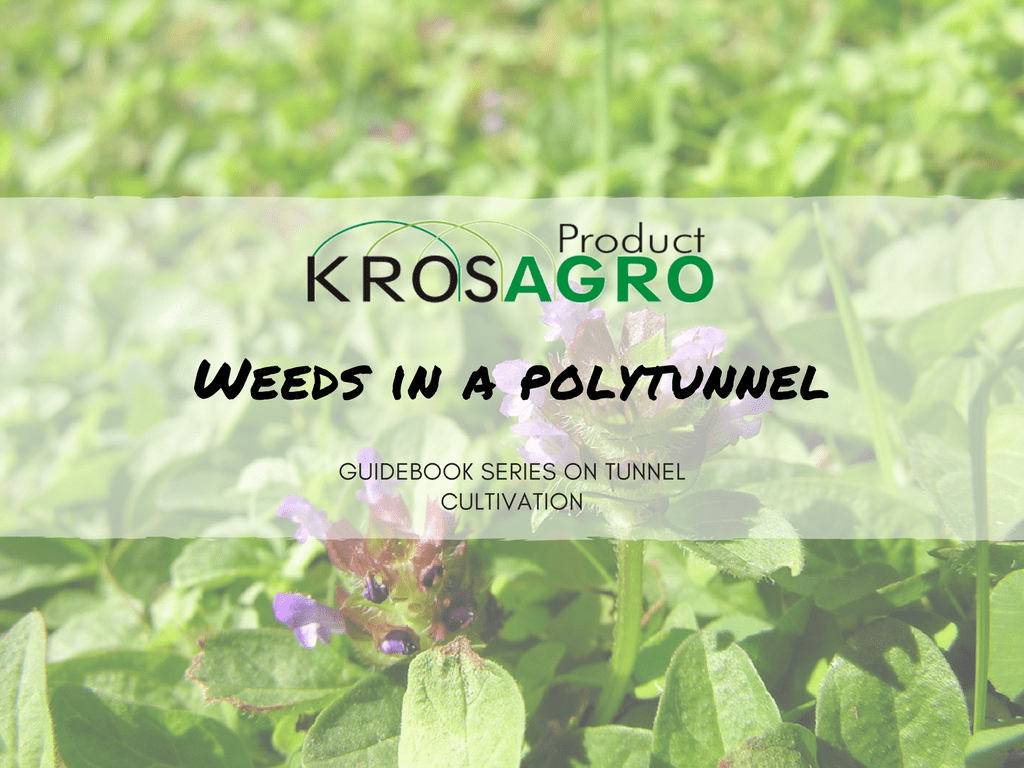Weeds in a polytunnel are a real nuisance for gardeners. They can overgrow the main crop, preventing its access to light and collecting most nutrients from the soil. Even in a greenhouse, there is a chance that it will develop in one of the cultivation areas. They are very expansive plants. Seeds can stick to clothes, shoe soles, travel through open doors while ventilating the tunnel. Although the plastic cover restrains their spreading, it remains one of the systematic task to perform.
In this Krosagro guide from the series “How to take care of the polytunnel“. We will tell you how to get rid of weeds to limit their presence among crops.
Contents
Weeds in a polytunnel
After watering
Weeding after irrigation is much more convenient than pulling weeds when the soil is dry. Light and moist soil greatly facilitates the removal of unnecessary plants. Grab them at the top , just pull up, and remove them with the roots.
Before it matures
Removing weeds before they grow fully will impede production of the next generation. A mature plant develops roots in the soil and sows seeds. It should be remembered that weeds grow much faster than other crops. But systematic checks in the polytunnel are enough to notice presence of “unwanted guests”.
Soil mulching
Spreading agro textile in a foil greenhouse strongly limits weeds growing possibilities. However, this solution is not suitable with all plant species or specific cultivation methods. When sowing plants close to each other. It will be difficult to plan openings, and there will be too many of them. However, when planting climbing plants, fruit trees or running a nursery under cover, mulching will be ideal.
Systematic removing
instead of removing weeds every now and then. Dealing with them immediately when you see them is a much better solution. Once they grow bigger and spread, fighting them can be very tiring. If we do not grow in garden crates in the foil tunnel. Constantly bending down will certainly lead to back pain.
Hiding weeds
Nooks and corners in a greenhouse are numerous : between boards on the path, on the sides of gardening crates, under cultivation tables, etc. Once in a while, it’s worth taking a look at places we normally do not pay attention to and see if they have developed weeds.
Before soil is mixed
At the end of the previous season, after seasonal plants were removed from the crates and before digging in the garden tunnel, it is worth removing weeds. It’s better to fight a few plants than dozens of shoots waiting to develop from this mix.
Compact crops
When growing plants close to each other, places where weeds can thrive are limited. Although in the first stage of growth the crop is too small to prevent it, when it develops, it will contribute to hinder weeds alone, not the other way around.
Filling the space
If the greenhouse is just a hobby for the gardener, who sometimes lacks time, it is worth mulching areas between beds or garden boxes. It is an easy and cheap method to prevent weed growth. For sites with no crops, use with agro textile. Using plastic anchors, it is fixed to the ground, carefully stretched, after which a layer of bark, stones, gravel, straw or other material is evenly applied.
Away from compost
All weeds are best burnt. Adding them to a composter can cause the return of unwanted seeds when spreading the compost.
